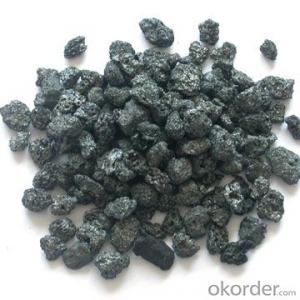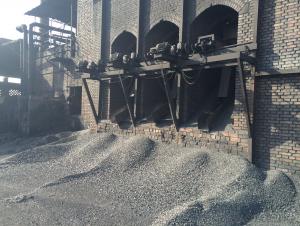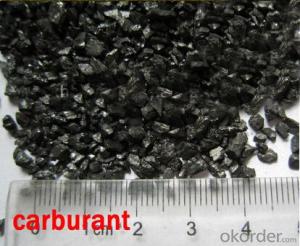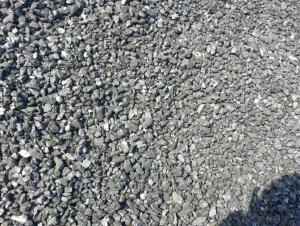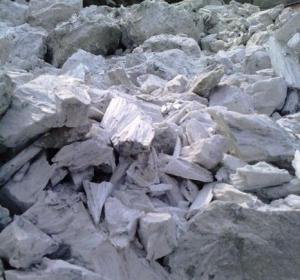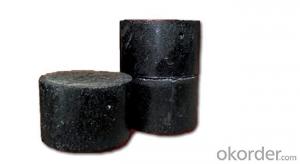120-150mm Foundry Coke of China Supplier for Furnace Charge
- Loading Port:
- Tianjin
- Payment Terms:
- TT OR LC
- Min Order Qty:
- 1100 m.t
- Supply Capability:
- 18000 m.t/month
OKorder Service Pledge
OKorder Financial Service
You Might Also Like
Product Description
Foundry Coke is one of metallurgical raw materials used for steel making.The coke handled by our corporation is made from superior coking coal in Shanxi province. Provided with the dvantages of low ash, low sulphur and high carbon.Our coke is well sold in European,American,Japanese and South-east Asian markets.
Features
This is a special coke that is used for furnaces to produce cast and ductile iron products. It is a source of heat and also helps to maintain the required carbon content of the metal product. Foundry coke production requires lower temperatures and longer times than blast furnace coke.
Specification
Fixed Carbon | Sulphur Content | Moisture | V.Matter | Ash |
86%min | 0.7%max | 5%max | 1.2%max | 12%max |
88%min | 0.65%max | 5%max | 1.5%max | 10%max |
85%min | 0.8%max | 15%max | 2%max | 13.5%max |
Pictures
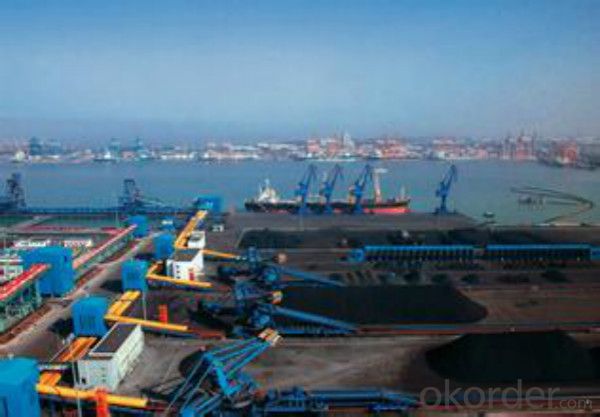
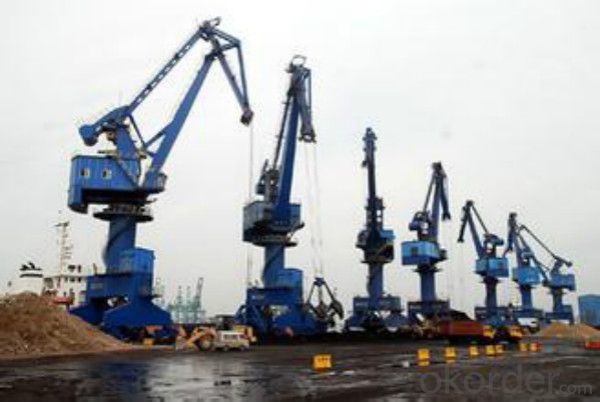
FAQ:
1 How long can we deliver the cargo?
Within 30 days after receiving the LC draft or down payment
2 Time for after-sales?
1 year.
3 Payment terms?
D/P, L/C, T/T with downpayment
- Q:How do you make your own carbon fiber bar?Know. ID is how to make? Don't copy anything that has nothing to do with it
- Carbon fiber rods, generally used in fishing rods, medical and construction fields, the molding process is pultrusion.Pultrusion: traction carbon fiber yarn (carbon fiber yarn is usually 12K, 24K based) impregnated epoxy resin, by heating 130 degrees or so, high temperature curing molding.Specific molding process can be consulted.
- Q:How does carbon impact the availability of clean transportation?
- Carbon impacts the availability of clean transportation through its contribution to greenhouse gas emissions. Carbon dioxide (CO2) is a major greenhouse gas responsible for climate change, and the burning of fossil fuels in traditional transportation systems releases significant amounts of CO2 into the atmosphere. This has led to the urgent need for cleaner alternatives in the transportation sector. Clean transportation options, such as electric vehicles (EVs) and hydrogen fuel cell vehicles, are designed to minimize carbon emissions. By utilizing electricity or hydrogen as the primary source of energy, these vehicles produce zero tailpipe emissions, significantly reducing the carbon footprint associated with transportation. However, the availability and adoption of these clean transportation solutions are directly impacted by carbon-related factors. One key factor is the energy infrastructure required to support clean transportation. Electric vehicles, for example, rely on charging stations and a reliable power grid. The production of clean electricity from renewable sources, such as solar and wind, is crucial to ensure that EVs are truly emission-free. Therefore, the carbon intensity of the electricity grid plays a vital role in determining the environmental impact of electric transportation. Furthermore, the availability of carbon-neutral fuels is another important aspect. Hydrogen fuel cell vehicles, which convert hydrogen into electricity to power the vehicle, require a readily available and sustainable source of hydrogen. Currently, most hydrogen is produced from natural gas, which generates CO2 emissions during the production process. However, advancements in technologies like electrolysis, which uses renewable electricity to split water into hydrogen and oxygen, are paving the way for carbon-free hydrogen production. Additionally, carbon pricing and policies also impact the availability of clean transportation. By putting a price on carbon emissions, governments and organizations incentivize the adoption of low-carbon transportation options. This can lead to increased investment in clean transportation infrastructure, research, and development, ultimately driving the availability and affordability of clean transportation solutions. In conclusion, carbon emissions from traditional transportation systems have necessitated the development and availability of clean transportation alternatives. Factors such as the energy infrastructure, availability of carbon-neutral fuels, and supportive policies all influence the availability and accessibility of clean transportation. By addressing carbon impacts, we can accelerate the transition to a more sustainable and environmentally-friendly transportation system.
- Q:Can carbon 14 identify the age of porcelain?
- Identification of porcelain by carbon 14 is not very accurate.The so-called carbon fourteen assay, radiocarbon dating, uses the carbon fourteen, which is widely found in nature, to measure the age of animals and plants. In prehistoric and ancient, the smaller the impact of human activities on the earth's environment, and carbon in nature fourteen proportions remain constant, animals and plants in the survival time, due to its in vivo The new supersedes the old. sake, carbon fourteen also remained constant; however, the once dead, in fourteen carbon will continue to decay, the half-life is 5730 years, in the sealed state and the outside world is obviously different, which is the principle of carbon fourteen dating. We must note that animals and plants belong to the organic matter. However, most cultural relics, such as porcelain, pottery and bronze, are inorganic. Therefore, the application of carbon fourteen dating in archaeology is very limited.
- Q:Well, recently, the carbon cycle has suddenly come up with a lot of questions. What's the definition of carbon and light carbon? What are the characteristics, and what are the differences between the two?
- The organic matter is composed of recombinant LFOM was completely decomposed residue or, to re synthesis of aromatic substances as the main organic matter (mainly humus), its stable structure is complex, in fact this part of organic matter in soil clay is a combination between, or in the process of the formation of soil aggregates Among the internal organic matter enclosed in aggregates, plays a very important role in maintaining the structure of aggregates, it is difficult to be utilized by microorganisms, soil carbon pool is stable. The content of 2 components of features from a certain extent that the carbon sensitive to climatic and environmental changes of the reaction.
- Q:What are the consequences of increased carbon emissions on technological advancements?
- Increased carbon emissions can have both positive and negative consequences for technological advancements. On the positive side, a greater emphasis on reducing carbon emissions has stimulated innovation in clean technology and renewable energy sources. This has resulted in advancements in technologies like solar panels, wind turbines, and electric vehicles, which are considered more environmentally friendly alternatives to traditional energy sources. These advancements have the potential to create new industries, generate jobs, and foster sustainable development. However, increased carbon emissions can also have detrimental effects on technological advancements. The elevated levels of carbon dioxide in the atmosphere contribute to climate change, which poses significant challenges for various sectors, including technology. Extreme weather events, such as hurricanes and wildfires, can cause damage to infrastructure and disrupt technological systems. Additionally, higher temperatures can impair the efficiency of electronic devices, leading to increased energy consumption and decreased performance. Furthermore, the need to address climate change and develop clean technologies requires substantial financial investments. This can divert resources from other areas of technological innovation and research, thereby limiting progress in fields like artificial intelligence, biotechnology, or space exploration. Consequently, the focus on reducing carbon emissions may hinder overall advancements in certain technological areas. In conclusion, the consequences of increased carbon emissions on technological advancements are intricate and multifaceted. While they have driven innovation in clean technologies, they have also presented challenges and trade-offs in terms of resource allocation and the impact of climate change on technological infrastructure. Therefore, efforts to reduce carbon emissions must be balanced with the imperative of continued progress in other technological fields in order to achieve a sustainable and technologically advanced future.
- Q:What are the carbon nanotube applications?
- The hydrogen storage materials: gas adsorption in adsorption is a solid adsorbent surface behavior the occurrence process of adsorbent and solid surface characteristics are closely related. The adsorption mechanism of nanoparticles, it was generally accepted that adsorption of carbon nanotubes is mainly due to the surface hydroxyl carbon nanotubes nanoparticles. The effect of carbon nanotubes on the surface of to hydroxyl and certain cationic bonding, so as to achieve the apparent of metal ions or organic matter adsorption. In addition, carbon nanotube particles have a large surface area, is also an important reason for the adsorption of carbon nanotubes. Zheng Qingrong, Gu Anzhong and [4] were studied on the adsorption behavior of hydrogen in carbon nanotubes Cheng Hui Ming et al. Synthesis of SWNTS treated properly can store hydrogen at room temperature, the hydrogen storage weight of up to 4.2%, and 78.3% of the hydrogen storage under normal temperature and pressure The hydrogen is released, and the remaining hydrogen is released after heating. The SWNTS can be reused and has a high commercial valueThe proton exchange membrane fuel cell (PEM) is a new type of carbon nanotubes: fuel cell vehicle power supply the most potential, the fuel cell through the consumption of hydrogen to generate electricity, the exhaust gas discharged into water vapor, therefore no pollution. It is compared with the lithium ion battery and Ni MH battery has great superiority. Can use carbon nanotubes hydrogen storage material supply hydrogen, can also be through the decomposition of oil and gas and other hydrocarbons or directly from the air to obtain hydrogen fuel cell hydrogen source.
- Q:What is the role of carbon 60 in industry? Can it be interchanged with the chemical properties of carbon? What is the chemical structure of carbon 60?
- Used to strengthen metals; used as a new catalyst for storage of gases
- Q:How are carbon nanotubes produced?
- Carbon nanotubes are produced through a process called chemical vapor deposition (CVD), which involves the use of a carbon-containing gas and a catalyst. In this process, a substrate is coated with a catalyst material, usually iron, nickel, or cobalt. The substrate is then placed in a high-temperature furnace, typically around 800-1000 degrees Celsius, and exposed to a carbon-containing gas, such as methane or ethylene. As the gas decomposes at high temperatures, carbon atoms are released and deposited onto the catalyst nanoparticles on the substrate. These carbon atoms then arrange themselves in a hexagonal pattern, forming a tube-like structure, which grows vertically from the catalyst particles. The growth of the nanotubes is driven by the difference in carbon solubility between the catalyst and the growing tube. The diameter, length, and alignment of the carbon nanotubes can be controlled by adjusting various parameters such as the temperature, gas flow rate, and catalyst material. By manipulating these parameters, researchers can produce carbon nanotubes with specific characteristics suitable for various applications. It's worth noting that there are other methods to produce carbon nanotubes, such as arc discharge and laser ablation, but CVD is the most commonly used method due to its scalability and ability to produce large quantities of nanotubes. Additionally, CVD allows for the growth of vertically aligned nanotube arrays, which are highly desirable for many applications.
- Q:Glucose contains resveratrol (C14H12O3) to determine the mass ratio of resveratrol and carbon dioxide of the same quality as carbon dioxide
- They are x and y, containing carbon equal, according to the mass of an element = the mass of a compound * the elementMass fractionFor C14H12O3, the carbon mass fraction is C%=12*14/ (12*14+12+16*3) *100%=73.68%For CO2, the mass fraction of carbon is 12/ (12+16*2) =27.27%There is x *73.68%=y*27.27%So there's X: y =57:154
- Q:How is carbon formed?
- Carbon is formed through various natural processes, primarily through the cycle of life and death of living organisms. The formation of carbon starts with the process of photosynthesis in plants, where they use sunlight, water, and carbon dioxide from the atmosphere to produce glucose. This glucose is then converted into other organic molecules, such as carbohydrates, fats, and proteins, which form the fundamental building blocks of all living organisms. When plants and animals die, their remains and waste products are broken down by decomposers like fungi and bacteria. During this decomposition process, carbon is released back into the environment in the form of carbon dioxide or methane gas. Additionally, some of the organic matter may become buried under layers of sediment, where it undergoes a process called fossilization over millions of years. This fossilization process, combined with heat and pressure, transforms the organic matter into fossil fuels such as coal, oil, and natural gas, which are rich sources of carbon. Apart from the biological processes, carbon can also form through geological processes. Volcanic eruptions release carbon dioxide into the atmosphere, and over long periods of time, this carbon dioxide can dissolve in water and combine with minerals to form rocks like limestone. These rocks act as a carbon sink, storing large amounts of carbon over geologic timescales. Overall, carbon is formed and cycled through a complex interplay of biological and geological processes, playing a crucial role in maintaining the balance of carbon in the Earth's atmosphere and supporting life as we know it.
1. Manufacturer Overview |
|
|---|---|
| Location | |
| Year Established | |
| Annual Output Value | |
| Main Markets | |
| Company Certifications | |
2. Manufacturer Certificates |
|
|---|---|
| a) Certification Name | |
| Range | |
| Reference | |
| Validity Period | |
3. Manufacturer Capability |
|
|---|---|
| a)Trade Capacity | |
| Nearest Port | |
| Export Percentage | |
| No.of Employees in Trade Department | |
| Language Spoken: | |
| b)Factory Information | |
| Factory Size: | |
| No. of Production Lines | |
| Contract Manufacturing | |
| Product Price Range | |
Send your message to us
120-150mm Foundry Coke of China Supplier for Furnace Charge
- Loading Port:
- Tianjin
- Payment Terms:
- TT OR LC
- Min Order Qty:
- 1100 m.t
- Supply Capability:
- 18000 m.t/month
OKorder Service Pledge
OKorder Financial Service
Similar products
New products
Hot products
Hot Searches



